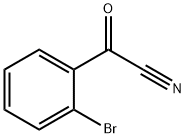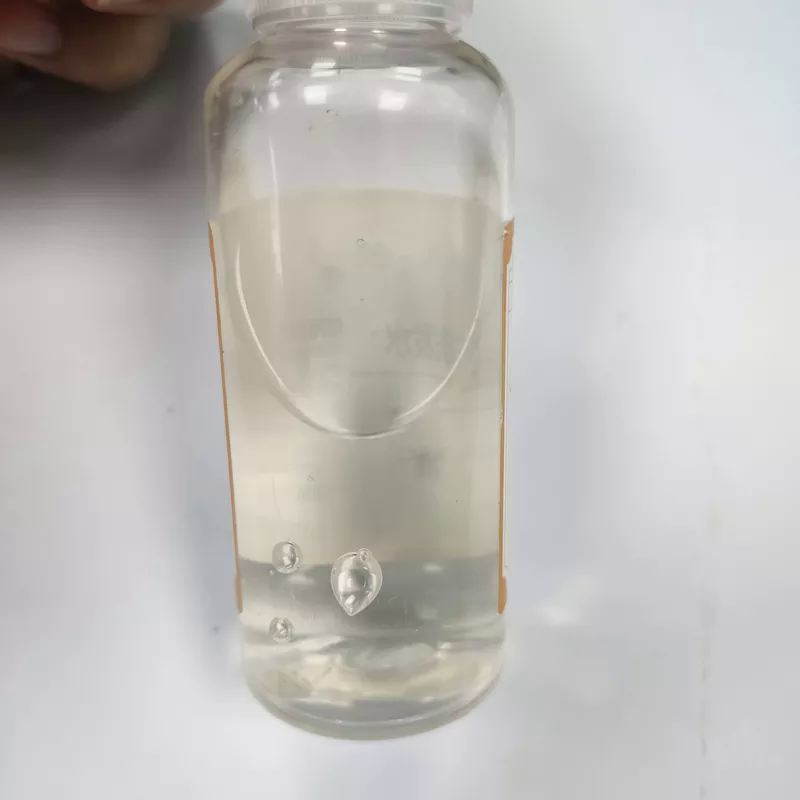PYRUVONITRILE
Synonym(s):2-Oxopropionitrile;Acetyl cyanide
- CAS NO.:631-57-2
- Empirical Formula: C3H3NO
- Molecular Weight: 69.06
- MDL number: MFCD00001838
- EINECS: 211-159-2
- SAFETY DATA SHEET (SDS)
- Update Date: 2024-12-17 17:33:13

What is PYRUVONITRILE?
The Uses of PYRUVONITRILE
Pyruvonitrile was used in the synthesis of cuprate-carbonyl π-complexes by reaction with Me2CuLi in THF.
General Description
The infrared spectra of pyruvonitrile was studied.
Properties of PYRUVONITRILE
| Boiling point: | 92-93 °C(lit.) |
| Density | 0.974 g/mL at 25 °C(lit.) |
| refractive index | n |
| Flash point: | 58 °F |
| storage temp. | 2-8°C |
| solubility | Soluble in ether and acetonitrile. |
| form | Liquid |
| color | Colorless to brown |
| BRN | 1737633 |
| Exposure limits | NIOSH: IDLH 25 mg/m3 |
| CAS DataBase Reference | 631-57-2 |
Safety information for PYRUVONITRILE
| Signal word | Danger |
| Pictogram(s) |
 Flame Flammables GHS02  Skull and Crossbones Acute Toxicity GHS06 |
| GHS Hazard Statements |
H225:Flammable liquids H315:Skin corrosion/irritation H335:Specific target organ toxicity, single exposure;Respiratory tract irritation H412:Hazardous to the aquatic environment, long-term hazard |
| Precautionary Statement Codes |
P210:Keep away from heat/sparks/open flames/hot surfaces. — No smoking. P233:Keep container tightly closed. P273:Avoid release to the environment. P301+P310:IF SWALLOWED: Immediately call a POISON CENTER or doctor/physician. P303+P361+P353:IF ON SKIN (or hair): Remove/Take off Immediately all contaminated clothing. Rinse SKIN with water/shower. |
Computed Descriptors for PYRUVONITRILE
| InChIKey | QLDHWVVRQCGZLE-UHFFFAOYSA-N |
New Products
Tert-butyl bis(2-chloroethyl)carbamate 4-Methylphenylacetic acid N-Boc-D-alaninol N-BOC-D/L-ALANINOL N-octanoyl benzotriazole 3-Morpholino-1-(4-nitrophenyl)-5,6-dihydropyridin- 2(1H)-one Furan-2,5-Dicarboxylic Acid DIETHYL AMINOMALONATE HYDROCHLORIDE 1,1’-CARBONYLDIIMIDAZOLE R-2-BENZYLOXY PROPIONIC ACID 1,1’-CARBONYLDI (1,2-4 TRIAZOLE) N-METHYL INDAZOLE-3-CARBOXYLIC ACID (2-Hydroxyphenyl)acetonitrile 4-Bromopyrazole 5-BROMO-2CYANO PYRIDINE 5,6-Dimethoxyindanone 5-broMo-2-chloro-N-cyclopentylpyriMidin-4-aMine 2-(Cyanocyclohexyl)acetic acid 4-methoxy-3,5-dinitropyridine 1-(4-(aminomethyl)benzyl)urea hydrochloride 2-aminopropyl benzoate hydrochloride diethyl 2-(2-((tertbutoxycarbonyl)amino) ethyl)malonate tert-butyl 4- (ureidomethyl)benzylcarbamate Ethyl-2-chloro((4-methoxyphenyl)hydrazono)acetateRelated products of tetrahydrofuran








You may like
-
 631-57-2 Acetyl cyanide Or Pyruvonitrile 98%View Details
631-57-2 Acetyl cyanide Or Pyruvonitrile 98%View Details
631-57-2 -
 Acetyl cyanide, 90% CAS 631-57-2View Details
Acetyl cyanide, 90% CAS 631-57-2View Details
631-57-2 -
 PYRUVONITRILE CAS 631-57-2View Details
PYRUVONITRILE CAS 631-57-2View Details
631-57-2 -
 Pyruvonitrile CAS 631-57-2View Details
Pyruvonitrile CAS 631-57-2View Details
631-57-2 -
 1975-50-4 98%View Details
1975-50-4 98%View Details
1975-50-4 -
 14714-50-2 (2-Hydroxyphenyl)acetonitrile 98+View Details
14714-50-2 (2-Hydroxyphenyl)acetonitrile 98+View Details
14714-50-2 -
 118753-70-1 98+View Details
118753-70-1 98+View Details
118753-70-1 -
 733039-20-8 5-broMo-2-chloro-N-cyclopentylpyriMidin-4-aMine 98+View Details
733039-20-8 5-broMo-2-chloro-N-cyclopentylpyriMidin-4-aMine 98+View Details
733039-20-8
Statement: All products displayed on this website are only used for non medical purposes such as industrial applications or scientific research, and cannot be used for clinical diagnosis or treatment of humans or animals. They are not medicinal or edible.